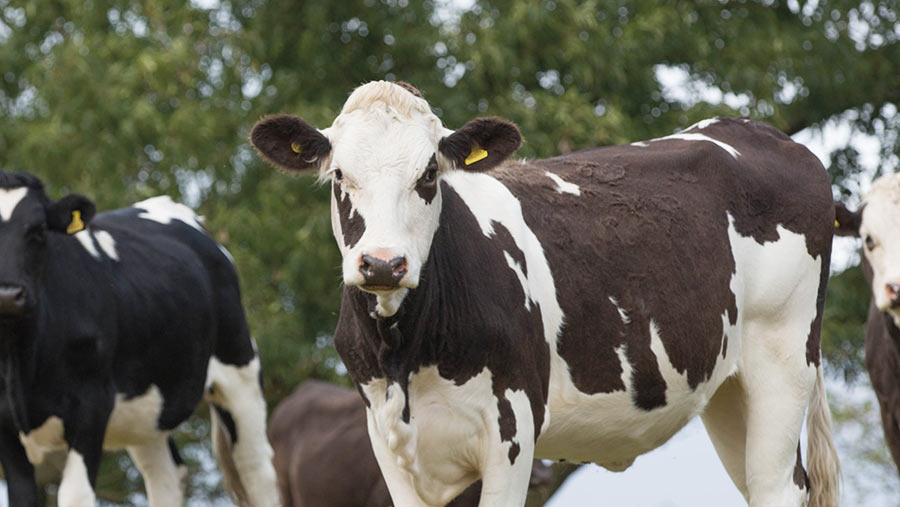A complete guide to leptospirosis in cattle
 © Tim Scrivener
© Tim Scrivener Leptospirosis is a serious, contagious, infectious disease found in cattle. Known as lepto, leptospirosis can affect other domestic animals, including dogs and sheep.
Failure to control the disease can not only have a detrimental effect on the health and production of the herd, but also have an effect on us too, because it is transmissible to humans from cattle.
A strategic use of vaccines and management measures to reduce environmental contamination can help keep its cause – the bacteria of the genus Leptospira – in check.
See also: A complete guide to controlling worms in your herd
Derrick Fall, veterinary surgeon, answers some key questions.
What is leptospirosis?
Leptospirosis is a bacterial infection caused by the bacteria from the genus Leptospira. There are two significant strains that affect cattle – Leptospira Borgpetersenil Serovar hardjo and Leptospira Interrogans Serovar hardjo.
How is it contracted by cattle? What are the clinical symptoms in cattle?
Cattle contract leptospirosis by coming into contact with infected urine, abortive material and reproductive fluid, such as semen, from infected bulls. It can also be contracted by other cattle that are infected with the bacteria, co-grazing with sheep and sharing watercourses.
Clinical symptoms present with fever, jaundice, anemia, blood-tinged urine and inappetance. Bacteria can also persist in the cow’s reproductive tract, causing sub-clinical signs due to chronic infection, which leads to fertility issues, abortions and stillbirth.
What is the broader and economical effect on a herd?
Leptospirosis can have an effect on fertility in cattle, leading to abortions, stillbirths and an increased number of matings to reach conception.
Leptospirosis manifests as a drop in milk yield in dairy cattle. Infected cows may stop producing milk or may produce a small quantity of blood-tinged milk, which cannot be used for human consumption.
How do you test for it?
Both blood and milk samples can be tested. However, this can still be inconclusive in determining if the animal is currently infected; with the test only confirming if the animal has been exposed to it at some point in its life. To show current infection, the bacteria should also be tested for in kidney tissue or urine.
Can it be treated in cattle?
Administration of antibiotics is the usual treatment. Without antibiotics, the bacteria will have more time to spread through the herd.
How can you minimise risk or prevent it in cattle?
Preventative methods include vaccinations, with a stringent buying-in protocol highly advisable – such as buying stock from a leptospirosis-accredited herd.
Bacteria can also be shed from the male reproduction tract in the form of semen and be spread among the other cows, therefore the use of artificial insemination is safer than sharing a bull.
Remember, the bull needs regular monitoring to make sure they are BVD, IBR and leptospirosis free.
Other measures include fencing off cattle from potentially contaminated waters, and avoiding mixed grazing and water sharing with sheep.
Can you vaccinate against it?
Vaccines are available with a primary course of two injections, four to six weeks apart, followed by annual boosters to provide immunity. Calves that are born from a vaccinated cow are immune for about six months, and after this time they will need their own vaccination programme.
How can it be passed to humans?
The most common way of transmission is through infected urine (touching urine or an object that has been urinated on) or contaminated waters. A cut on the skin is a perfect way for the bacteria to gain entry.
It can be passed to humans if they come into contact with the bacteria via bodily fluids when the cow is calving or aborting.
How does it affect humans?
Leptospirosis has symptoms in humans including headaches, fever, muscular aches and sickness.
What is the human treatment?
The human treatment is antibiotics, with a recovery period of a few days or weeks.
Is there any way of preventing transmission to humans?
Measures include vaccinating the herd. Biosecurity is key, so don’t handle dead animals with bare hands and never drink water from rivers.
Personal prevention is also important, such as washing hands, cleaning and covering wounds. Protective clothing is also strongly advisable.
